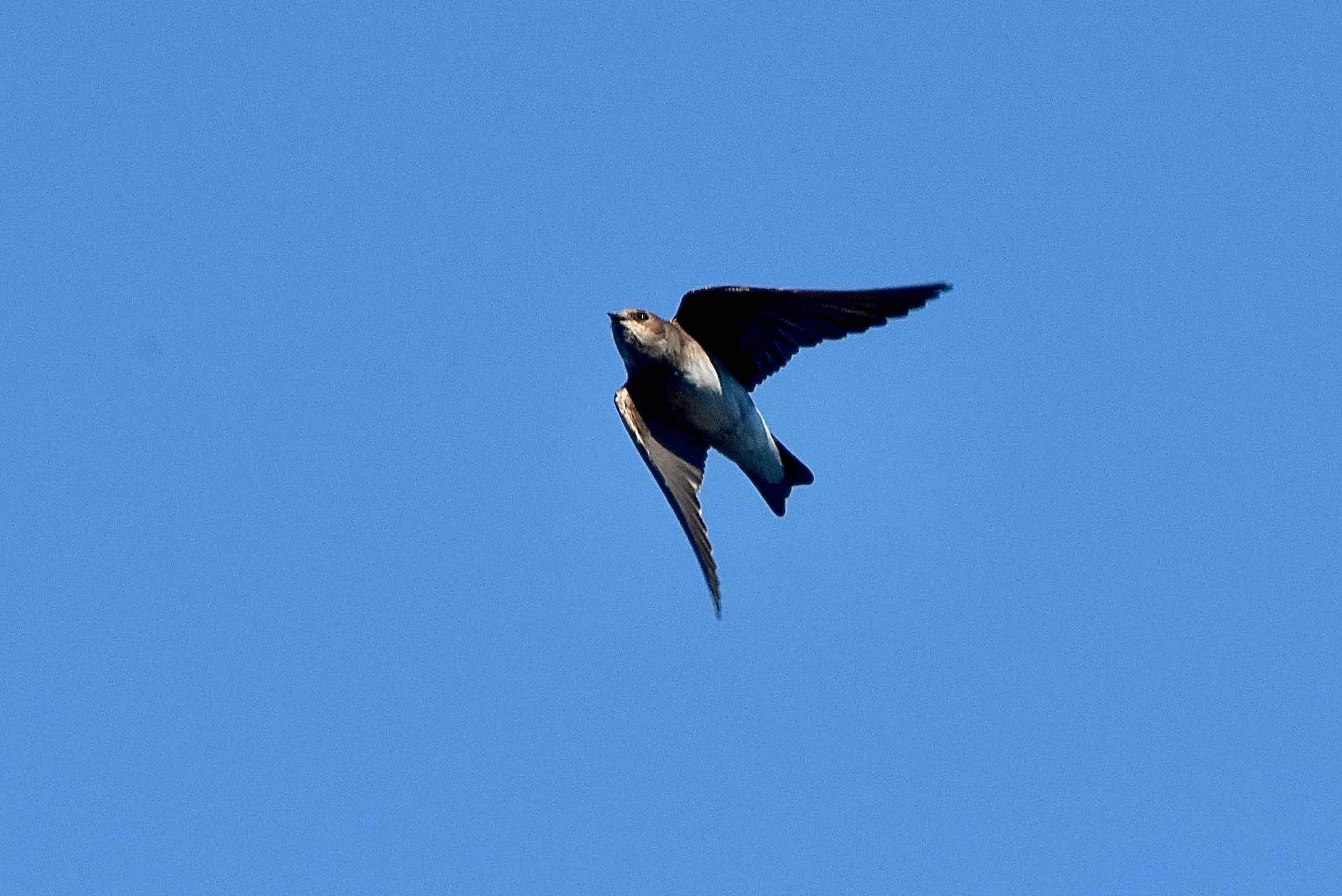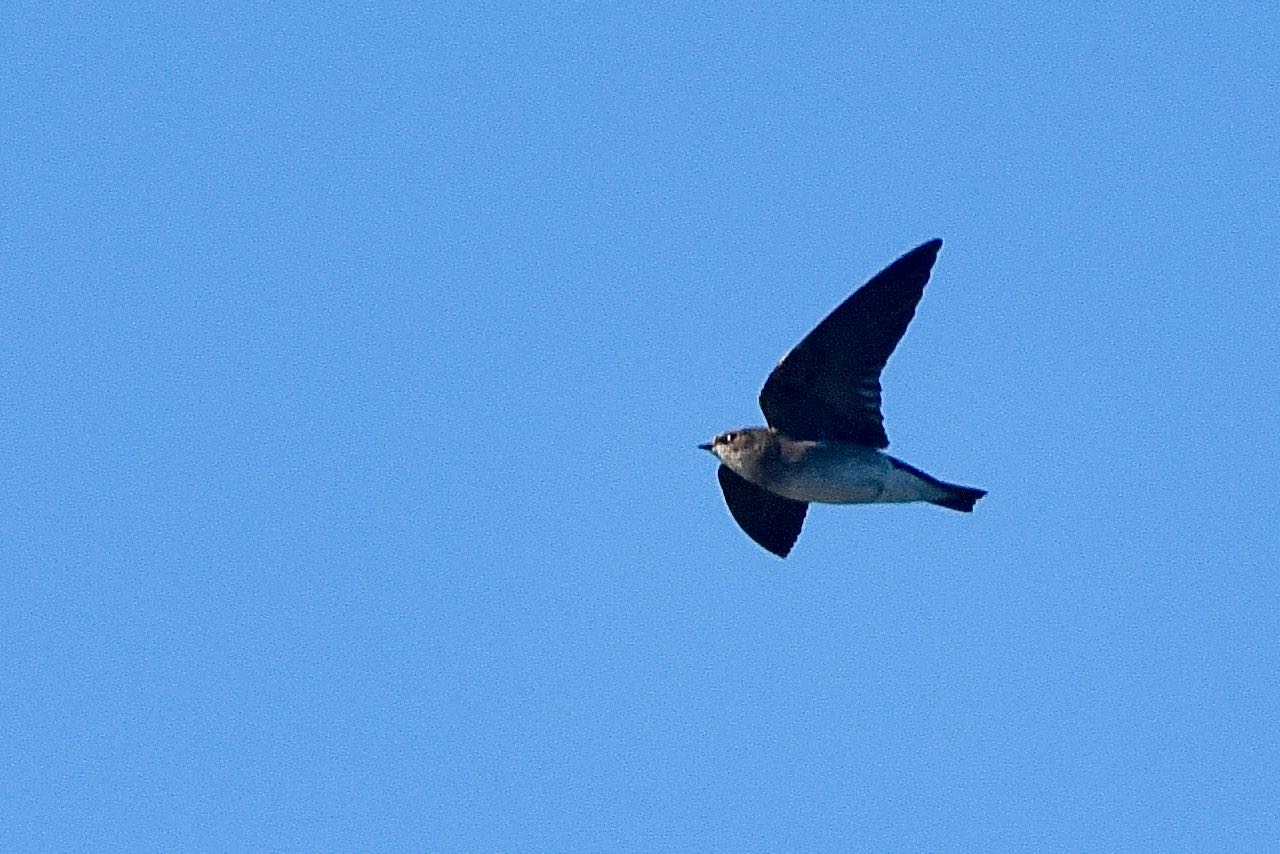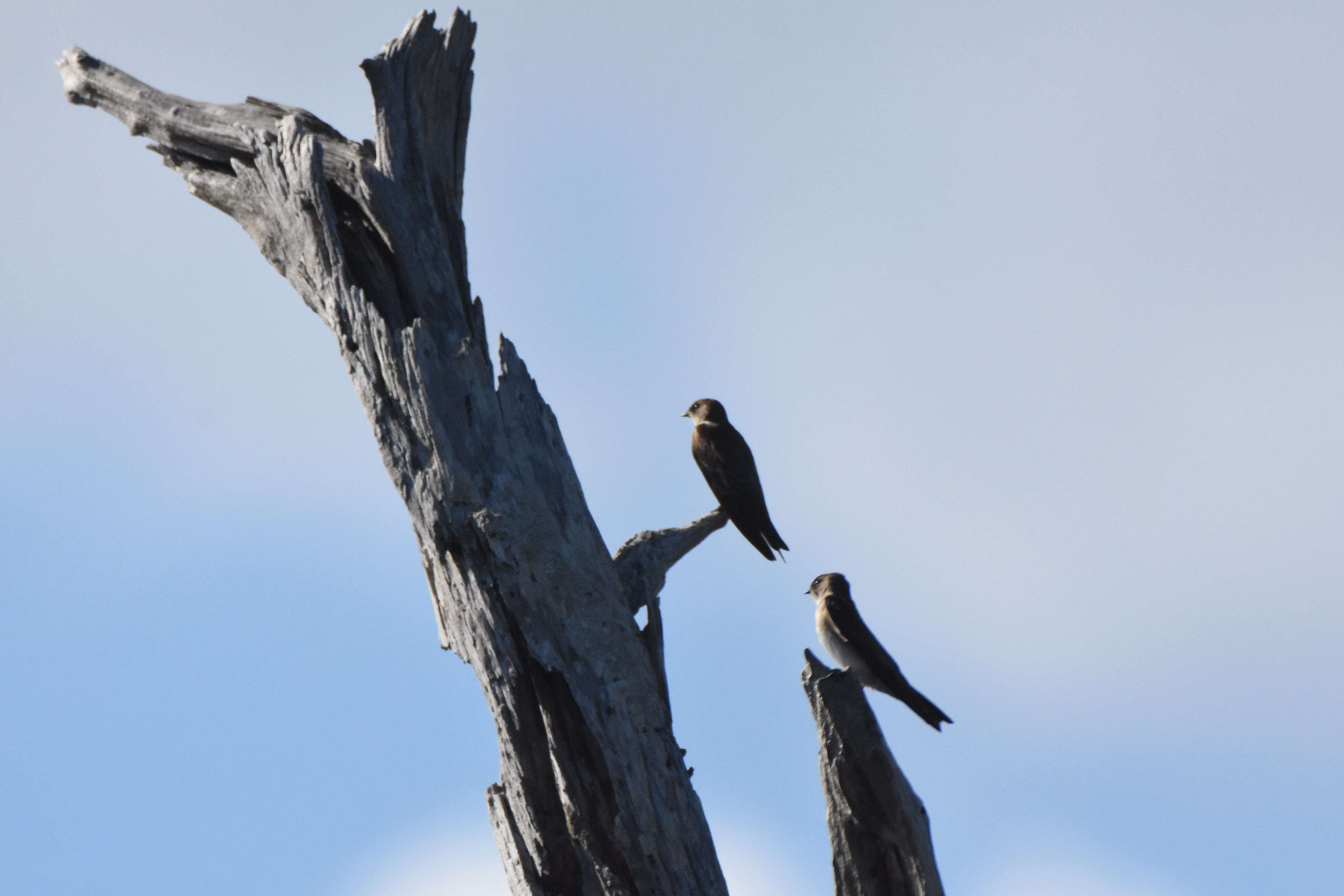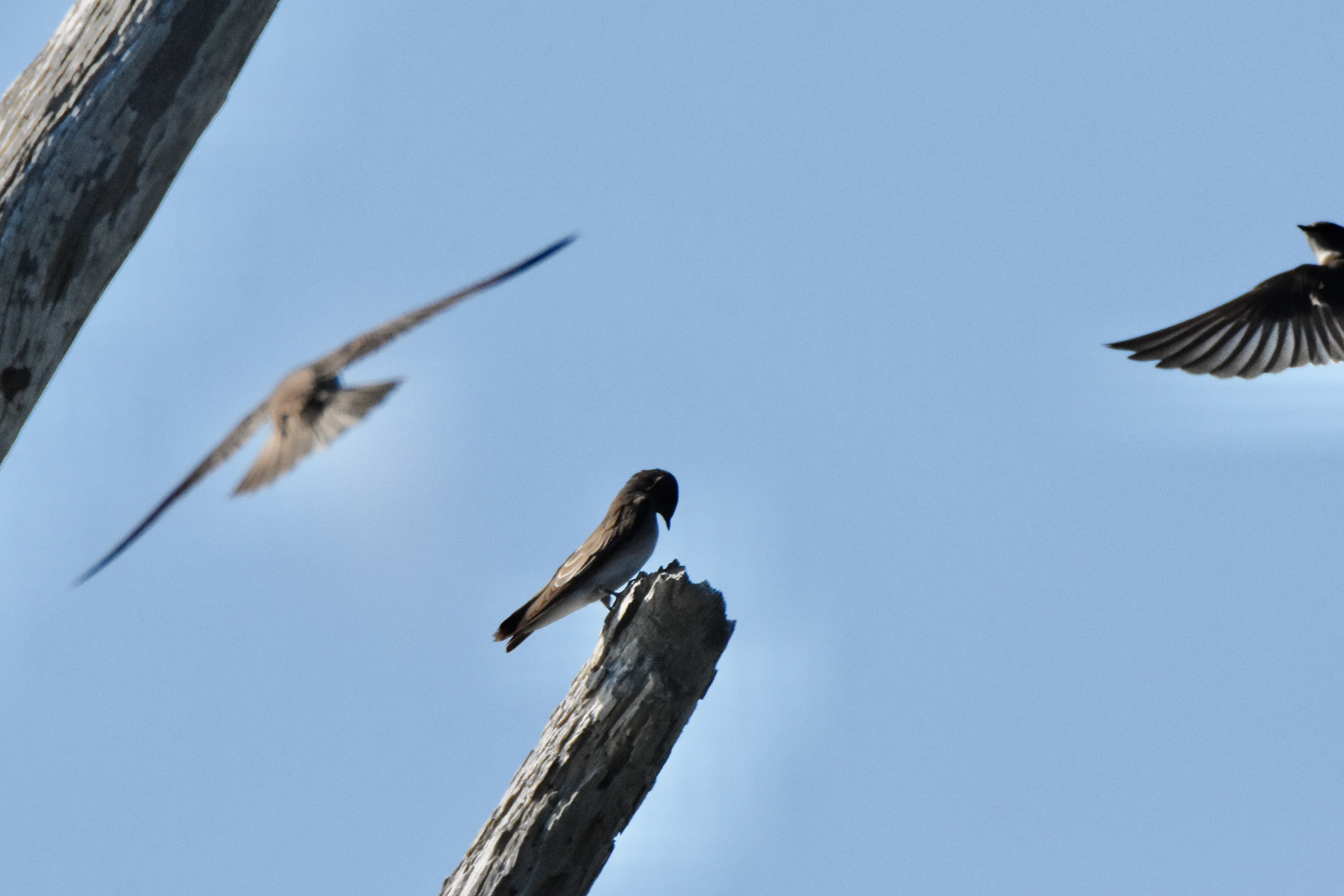
Northern rough-winged swallow, photographed at Green Cay Nature Center, Boynton Beach, Palm Beach County, in January 2019.
This bird, the northern rough-winged swallow, aka Stelgidopteryx serripennis, just doesn't seem to want to stop. It's like an avian perpetual motion machine, always flying, always diving, turning, soaring seemingly with the greatest of ease.
But also with a purpose. It's dining. Almost everything they eat, they catch on the fly.
Northern rough-winged swallows are fairly common winter visitors to South Florida. They're most likely to be found in open areas near water, which provides them with plenty of bugs to catch.
And yes, there is a southern rough-winged swallow, but the ranges of the two species don't quite overlap.
They are tiny birds, going 4.75 inches long to a maximum of about six, according to the Paxutent Migratory Bird Research Center. Their wingspan is typically less than a foot.
Northern rough-winged swallows aren't the most colorful of birds, but are a rather drab mix of grays and whites underneath and mostly browns on top. They have a roundish head, short neck and the classic swallow shape in flight — pointed wings and a forked tail. They have a tiny bill, apparently better suited to catching prey on the fly.
The name come from the serrated, or barbed edges on the wings of these birds, which are rough to the touch. The purpose of those serrations? Unknown, according to the Cornell Laboratory of Ornithology. Also according to Cornell, the meaning of the bird's scientific name is "scraper wing" and "saw feather."
Rough-winged swallows are found over most of North America, typically as a part-time resident. They spend summers breeding over most of the United States and southern Canada. Breeding range maps also include much of Florida north of Lake Okeechobee. Historically they've been known to nest as far south as Miami-Dade County, but according to the Florida Fish and Wildlife Commission, breeding rough-wingeds have become somthing of a rarity in the state. The most likely cause is a decline in suitable nesting sites. They will winter in South Florida and along the eastern coast of Mexico and Central America. Some are year-round residents of Central Ameria.
These are burrowing birds. They'll find a vertical surface somewhere, a bank, a cliff, a gorge, a sand dune or even a road cut and either find an abandoned burrow or dig one themselves. But they've been known to take advantage of man-made "burrows" such as culverts and drain pipes. They are solitary nesters, but small groups will form in favorable places.
The nest itself is made of twigs, plant material, bits of bark and grass. Females lay a clutch of four to eight eggs. Females apparently handle all of the sitting duties, a period that takes 12 days. Both parents feed their offspring, who fledge in three weeks, give or take.
Their menu includes a wide range of flying insects they take mostly while in flight.
Rough-winged swallows are members of Hirundinidae, the family of swallows and martins.
Click on photo for larger image
Links for Northern Rough-Winged Swallow



